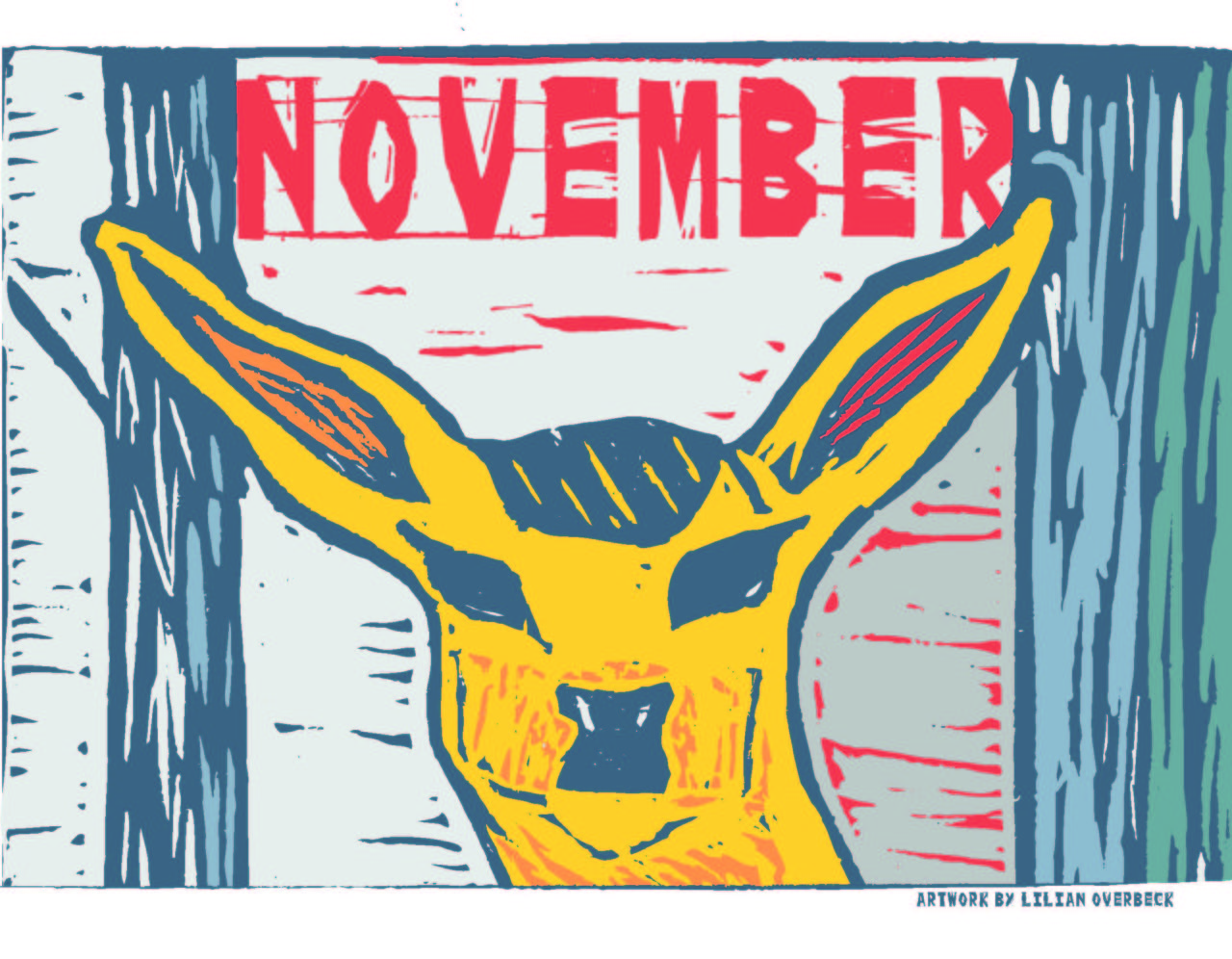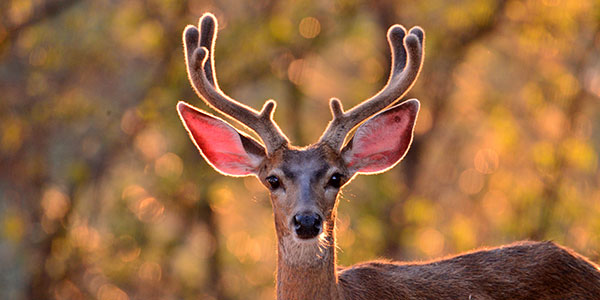NOVEMBER: Critters in the Rivers
November 2019

The 2019 ‘Living with the Methow River Calendar’ offers monthly information about our river habitat. It also showcases students’ artwork created in Methow Arts Education Programs after learning about our rivers from biologists. Learn more about our critters by visiting some the following sites: Twisp Ponds Discovery Center, Cottonwood Trail, The Winthrop Barn Trail, and Whitefish Island.
(This month’s artwork by 6th grade student, Lilian Overbeck.)
NOVEMBER FEATURES: mule deer.

Mule deer are named for their large mule-like ears. The Methow Valley is host to Washington State’s largest mule deer herd. Healthy riparian forests provide shelter and forage for mule deer near water sources.
Mule deer’s defining characteristic are their large ears, which are about three-fourths the length of the head. They have a distinctive black forehead, or mask, that contrasts with a light gray face. In the summer, mule deer are tannish-brown and in the winter are brownish-gray in color. They have a white rump patch and a small white tail with a black tip. When running, they bound in a motion called “stotting,” in which all four hooves push off the ground at the same time.
Black-tailed deer are a subspecies of mule deer found in the Northwest and, as their name suggests, have black tails instead of white. White-tailed deer are a different species but overlap in range with the mule deer in some places. Mule deer are slightly larger, have bigger ears, smaller tails, and have a forked antler structure rather than having points that grow from a central branch. The easiest way to differentiate the species is to look at the tail. Only the underside of the white-tailed deer’s tail is white, while the mule deer’s tail is all-white with a black tip and is much smaller. In addition, mule deer do not flash their tails in alarm.
Mule deer range from 3 to 3.5 feet (0.9 to 1 meter) tall at the shoulder, 4.5 to 7 feet (1.4 to 2.1 meters) long, and have a tail that is five to eight inches (13 to 20 centimeters) long. They can weigh between 130 and 280 pounds (59 and 127 kilograms). The female deer are smaller than the male.

The Living with the Methow Calendar is available each year at Methow Arts and numerous location. These are free to the public with funding and support is provided by Washington Department of Ecology and Bonneville Environmental Foundation. Additional support from Methow Salmon Recovery Foundation, MRC partners, Bureau of Reclamation, the Methow Valley School District, Washington State Arts Commission, the National Endowment for the Arts, the Community Foundation of North Central Washington, Methow Valley Fund, PSFA, Icicle Fund, and generous members of Methow Arts.